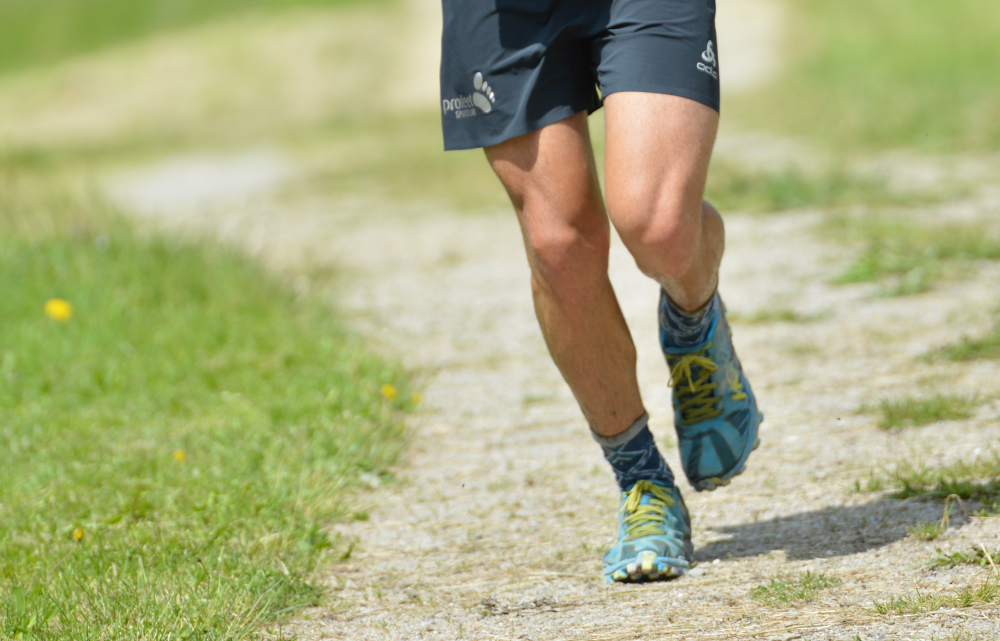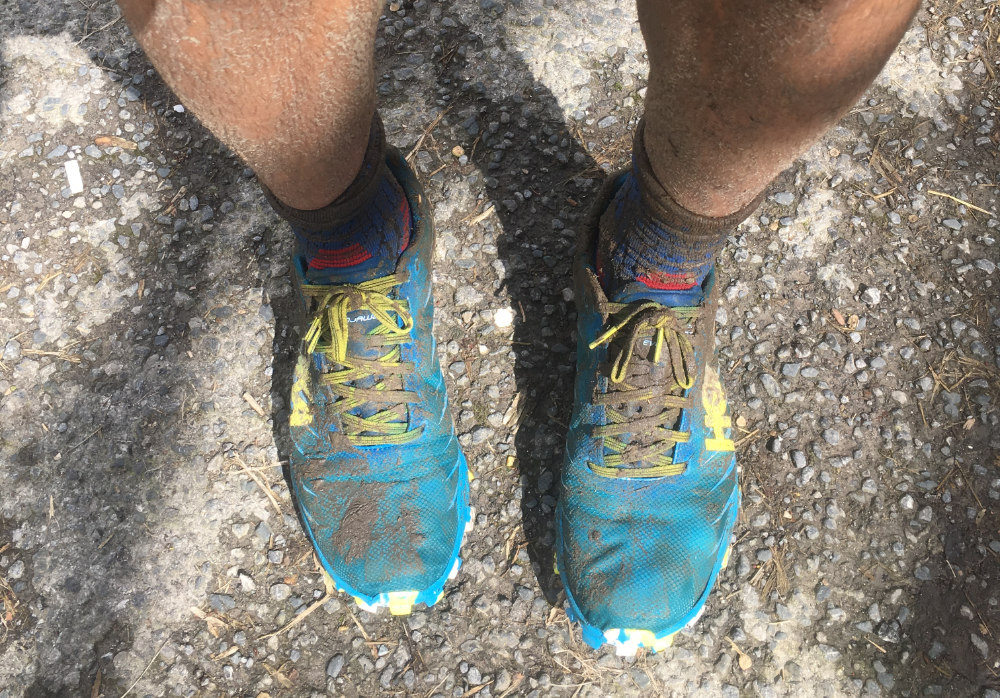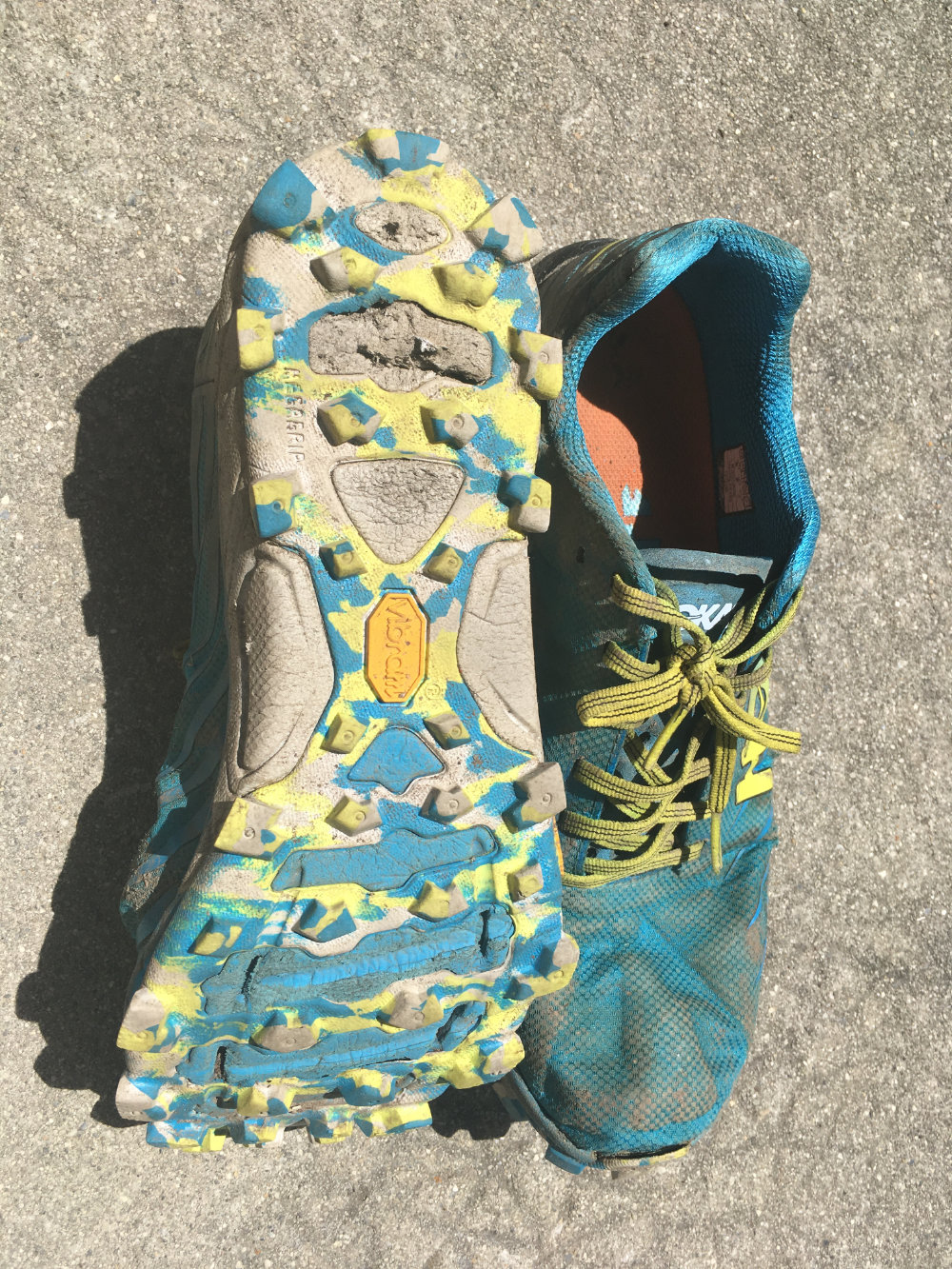
If you’re looking for an everyday training shoe for the trails, then look away now. The Hoka One One Evo Jawz is a racer.
When looking for a racing shoe there is often one thing that people rate above all else: weight. The Hoka One One Evo Jawz is certainly a step away from the super cushioned kicks the company are known for. So is it a racing shoe fit for purpose?
These shoes were provided by Hoka free of charge so this has to be taken into account with the review. As an athlete, I have no ties to the brand, training and racing in a variety of different shoes.
What are these shoes for?
As mentioned above, these are racing shoes. They are lightweight (220g in a Men’s UK size 9), have really good Vibram trail grip and look fast. It’s important that they look fast right?
It’s worth mentioning that my feet are reasonably narrow and these might not suit someone who usually runs in Altras or has problems with the little toes getting rubbed. If you normally run in Hokas then I felt these fitted a little better than the Speedgoat 2s.
If you were a fan of the inov8 X-Talon 190 then you’ll love the Evo Jawz. Straight out of the box it feels comfortable to run in and you can trust in the grip at the bottom of your foot.
What these are not, is a training shoe. The shoes are not made for heavy mileage and, as with many lightweight shoes, durability may become an issue if used every day.
How were they tested?
Not one to give anyone an easy ride these shoes took me through the Three Peaks Fell race, the 54km Amorotto Trail race in Italy and another hard 50km training run in the Alps trying to keep up with one of Hoka’s American athletes.
On top of this, the shoes were used in training before the Three Peaks multiple times to make sure they were up to the task. This was a mixture of shorter fast hill sessions and some longer mountain runs.
Strava tells me that the shoes went through at least 146.4 miles (234km) and that was with a huge amount of vertical climbing, time on feet and in all three main efforts they were soaked through in bogs, snowy fields and river crossings.
How were they?
Honestly, I loved racing in these shoes. I did swap out the insole for a slightly thicker one for a touch more cushioning. That was mainly due to running on a lot of rocks, and being a South of England softie. The grip is excellent, there is sufficient cushioning to feel comfortable over 54km in the Italian mountain and they are super lightweight. It feels like you’re floating along.
There were some issues with dye colouring the feet after the first few longer runs. But if you don’t mind smurf feet after a run then it’s not really a problem. It is something you imagine Hoka will fix going forward.
The negatives that I feel need mentioning are the durability and the cost. They are showing heavy signs of wear after the work I’ve put into them and are most likely over halfway through their lifespan.
Durability
Well, as might be expected by that battering, they are showing signs of wear and tear. The sole is in good condition with all lugs intact, but some of the cushioning looks damaged. The upper has started to come away at the front and there is a slight tear where the toes bend.
Yet this is what I would expect for a racing shoe that had been through such mileage. 146 miles might not be much if you’re running on the road, but it’s a fair amount of time in the mountains. I’d estimate they’ve been through at least 30 hours of running in extreme conditions.
Many want to see the magic 500 miles from their training shoes, but not every mile is created equal, and this needs to be taken into account for shoes as well as your training.
Cost
As I mentioned the shoes were provided free of charge, but they retail at about £110 (€125). Now comes the big question. Will I be buying another pair of the Evo Jawz when I’ve destroyed these ones?
Personally, I don’t often spend over £100 on a pair of running shoes, certainly not a lightweight racing pair. It just gets too expensive. If I can get another free pair then I would most certainly be wearing them at my next race.
If they were priced under £100 I think I would also be purchasing a new pair certainly and, if push comes to shove, I may even buy them for over £100 if I have no other choice. They’re just a great racing shoe.
Summary
Basically, if you want a lightweight racing shoe for the trails, you have to accept that they won’t last a lifetime. Should you have to accept this? Yes, I think it’s the only compromise for the lightest shoes.
Are the Evo Jaws any less durable than other brand’s trail racing shoe equivalent? I would put them on a par with Inov8’s shoe at the same weight, slightly lighter than Salomon’s more durable shoes, and certainly lighter than anything they have with the same grip. They are on par with the Inov8 X-Talon 190 as a fantastic trail racing shoe.















